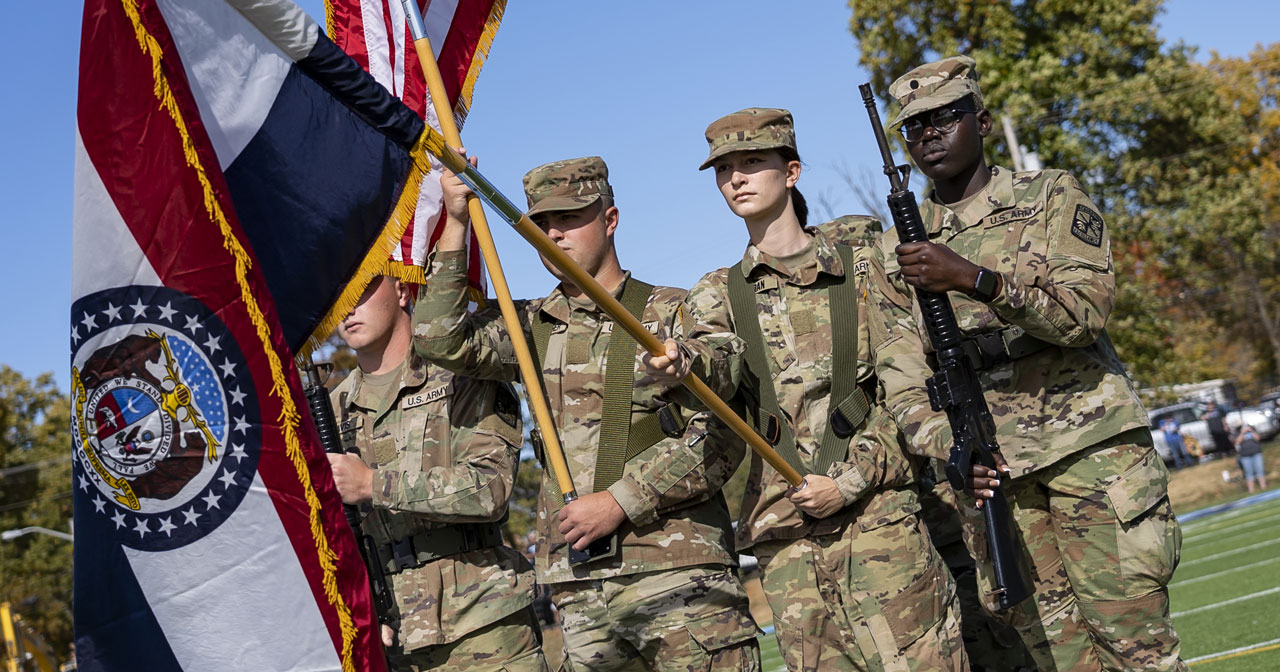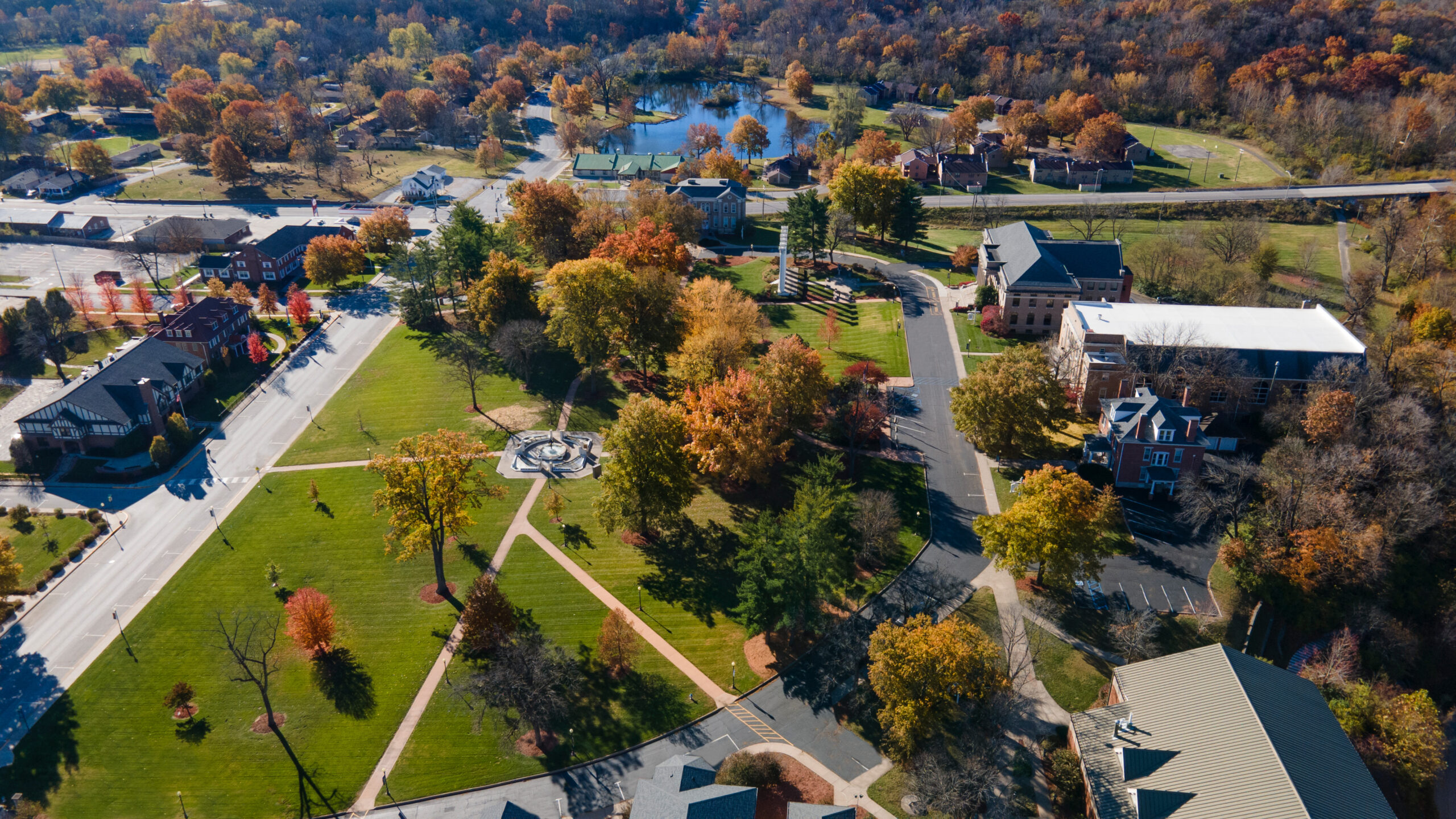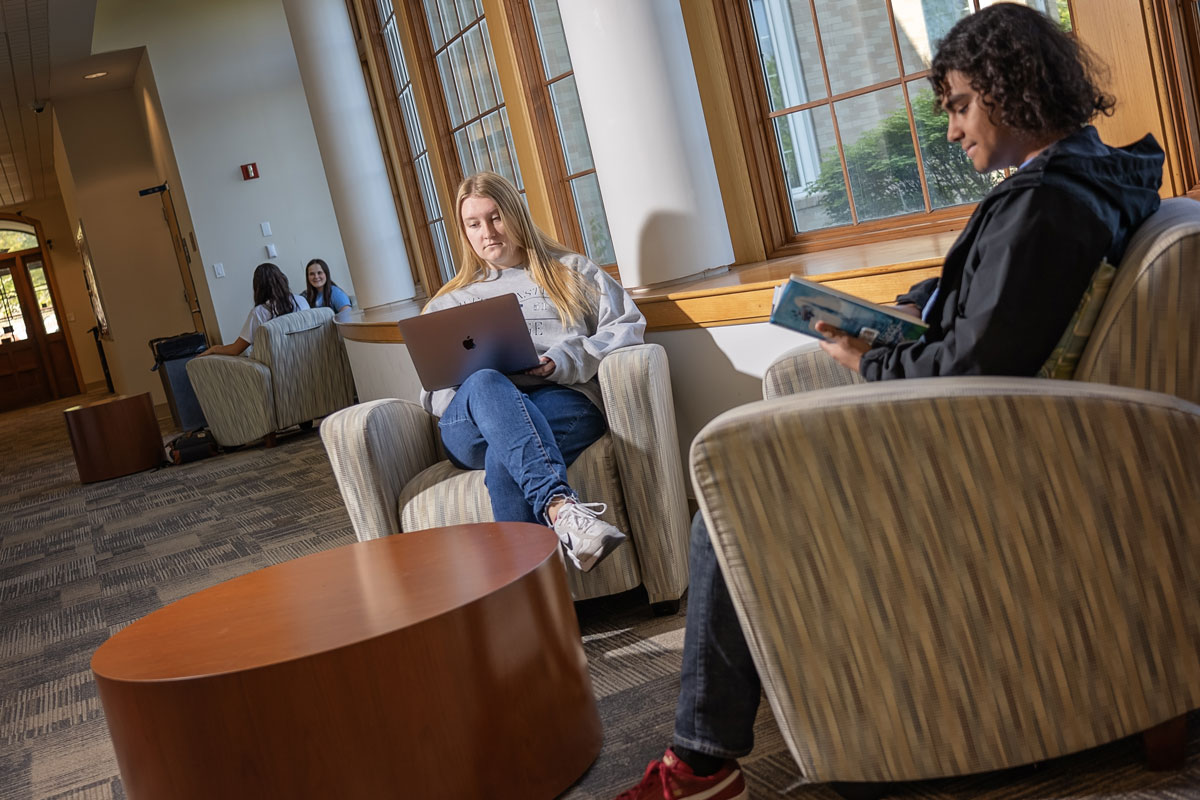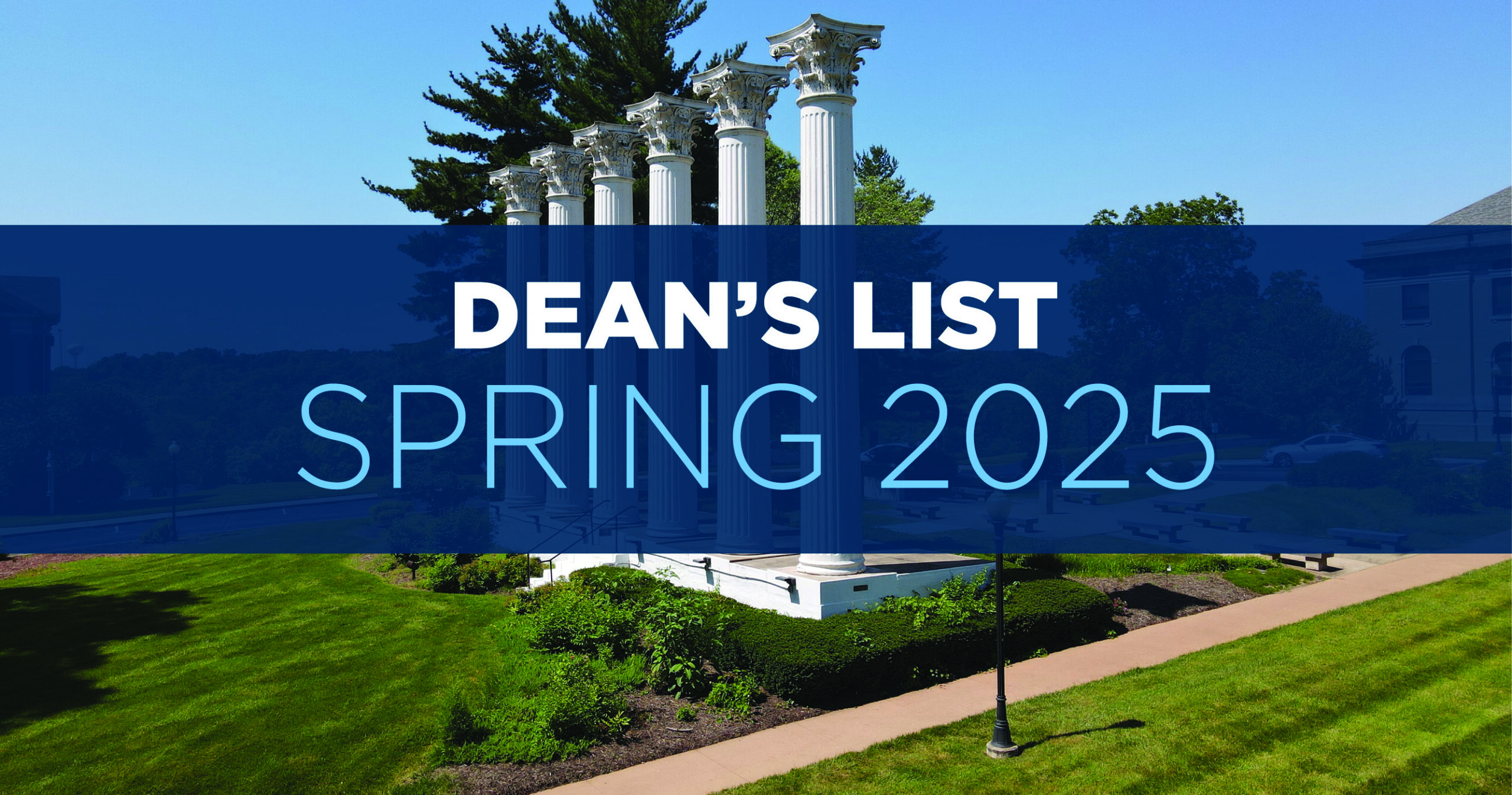As Veterans Day approaches, we honor Westminster’s mighty military legacy that stretches back over a century, with particular emphasis on our storied Army ROTC program.
Although Westminster’s ROTC program remains small, it embodies Gen. Dwight D. Eisenhower’s words: “What counts is not necessarily the size of the dog in the fight ― it’s the size of the fight in the dog.”
Early Military Presence at Westminster
The College’s military ties began with its Student Army Training Corps during World War I in October 1919. Though brief, ending just weeks later with the November Armistice, this marked the start of a strong tradition.

During World War II, Westminster’s campus became a U.S. Navy flight training site, hosting nearly 300 trainees. After the war, the Navy V-12 program held its final review in October 1945 on what is now Blue Jay Field at the Kent and Judith Mueller Stadium.
Maj. Gen. Harry Vaughn and President Harry S. Truman
Maj. Gen. Harry Vaughan, Class of 1916 and close friend of President Harry S. Truman, helped shape Westminster’s military presence. Vaughan, who fought alongside Truman in World War I, urged the president to endorse Winston Churchill’s visit to Westminster in 1946, where Churchill delivered his historic “Iron Curtain” speech.
Early Days of ROTC at Westminster College
With Westminster’s military legacy growing, Vaughan soon advocated for an ROTC unit at his alma mater.
At the request of the Board of Trustees and president of the College, Vaughn approached Truman to advocate for a Westminster Army ROTC unit, and the Missouri-born U.S. president, who once described Westminster to Churchill as “a great small college,” quickly complied.
Truman endorsed the program in 1951, quickly securing Westminster the title of the smallest ROTC unit in the United States ― with all freshmen and sophomores required to join.

ROTC at Westminster has adapted with the times. The program expanded to include women in the 1970s and thrived through the 1980s before experiencing declines in the 1990s, like many colleges across the country. In 1991, Westminster commissioned its last class of officers for nearly 20 years. But in 2017, the program was reestablished in partnership with Lincoln University in Jefferson City, Missouri.
ROTC Today at Westminster College

To date, more than 650 Westminster students have been commissioned through the College’s ROTC program. Some students have participated in affiliated programs at larger universities, while others have gone on to leave legacies of profound sacrifice.
Currently, eight cadets form Westminster’s Army ROTC program. Maj. J. Marc McQuilliams, Professor of Military Science, explains that the small class size allows for more of a team dynamic. “They get a chance to learn and grow in a smaller environment,” he says. “At leadership lab training and field training exercises, they get to interact with a much larger team, allowing them to understand differing dynamics and leadership styles and then use those skills when interacting in larger groups.”
Although Westminster’s ROTC program remains small, it embodies Gen. Dwight D. Eisenhower’s words: “What counts is not necessarily the size of the dog in the fight ― it’s the size of the fight in the dog.”
For Westminster, ROTC isn’t just a program; it’s part of the College’s identity. To all who serve and sacrifice, as Churchill once put it, “blood, toil, tears, and sweat,” Westminster offers its deepest gratitude.
Sarah Rummel Backer is the Director of Media Relations and Senior Writer at Westminster College in Fulton, Missouri. A proud Westminster graduate, Sarah has more than 20 years of experience in marketing and strategic communications in the areas of higher education, medicine, agriculture, and the private business sector.







You must be logged in to post a comment.